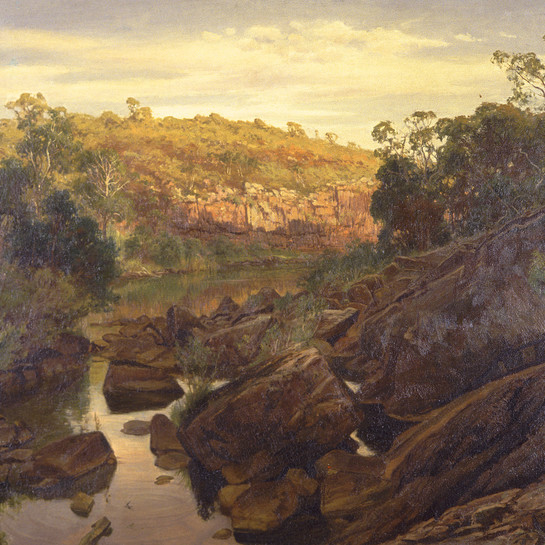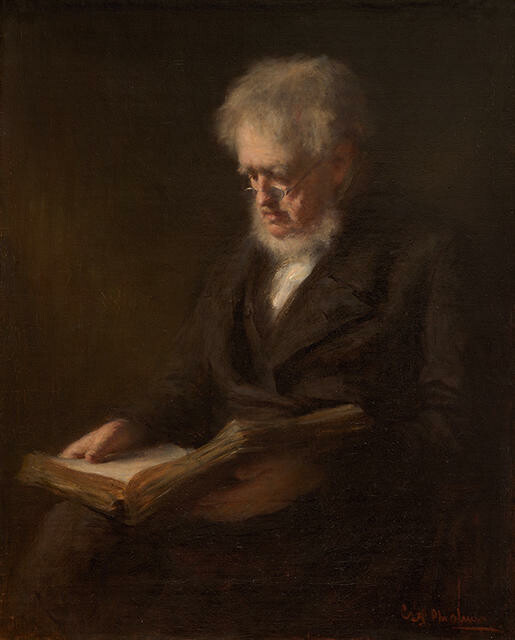George Paul Chalmers
Scotland, b.1833, d.1878
The End Of The Chapter
- c. 1872
- Oil on canvas
- Presented by R E McDougall, 1932
- 700 x 600 x 65mm
- 69/351
Tags: books, elderly, hair, people (agents), reading, spectacles (eyeglasses)
George Paul Chalmers was one of the most important Scottish artists of his time and painted many significant portraits. However, The End of the Chapter is intended as an allegory, representing the idea of a life lived rather than any specific individual. The elderly man is placed within a dark interior; light enters the scene and is reflected up from the book to illuminate the face of the reader. Chalmers expresses something existential through his use of chiaroscuro, the contrast of light and dark, which here provides a contemplative mood and suggests an intimate internal dialogue.
(Endless Light, 29 June 2019 – 8 March 2020)
Exhibition History
Brought to light, November 2009- 22 February 2011
But for the provocative title supplied by Chalmers, this painting would be a simple portrait of an elderly man absorbed in his book. The artist, however, is implying that the reader has himself come to the end of the chapter: it is a metaphor for the nearness of his death. Suddenly the work takes on new meanings, and the sitter comes to represent the passing of time and the fate that awaits us all.
Dimly lit interior scenes such as this were popular subjects with George Chalmers. He was interested in exploring the effects of light and dark(chiaroscuro) on his sitters, particularly the elderly, as he has done with the man in this work. Chalmers was influenced by the work of the Spanish artist Diego Velásquez (1599 -1660) and the Dutch painter, Rembrandt van Rijn (1606-1669). It is likely that Chalmers painted The End of the Chapter after visiting Holland in the mid-1870s. Born in Montrose, Scotland, Chalmers was the son of a captain of a coastal vessel. At the age of 20 he left his apprenticeship with a chemist and moved to Edinburgh where he began art studies under R. Scott Lauder (1803 -1869) at Trustee’s Academy. Chalmers earned his living as a portrait painter. He associated with fellow Scottish artists, such as Hugh Cameron (1835-1918) and William McTaggart (1835 -1910). Chalmers began exhibiting with the Royal Scottish Academy in 1855 and became a full member in 1871.
(Label from before 2003)


